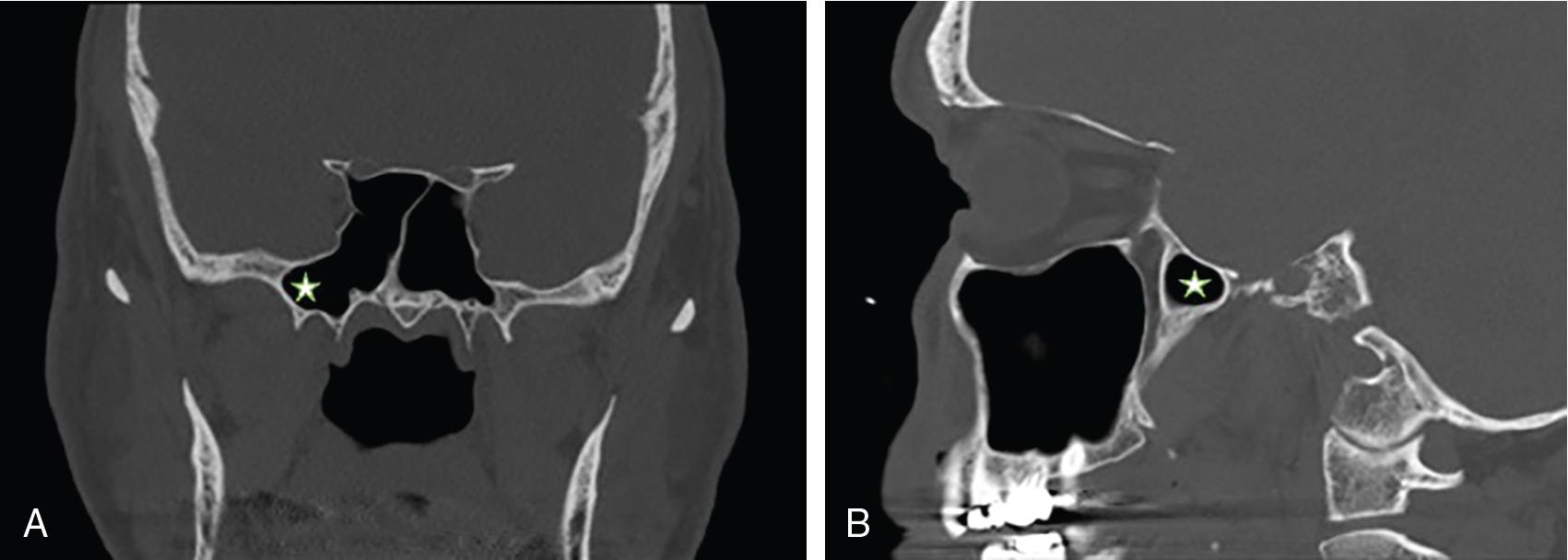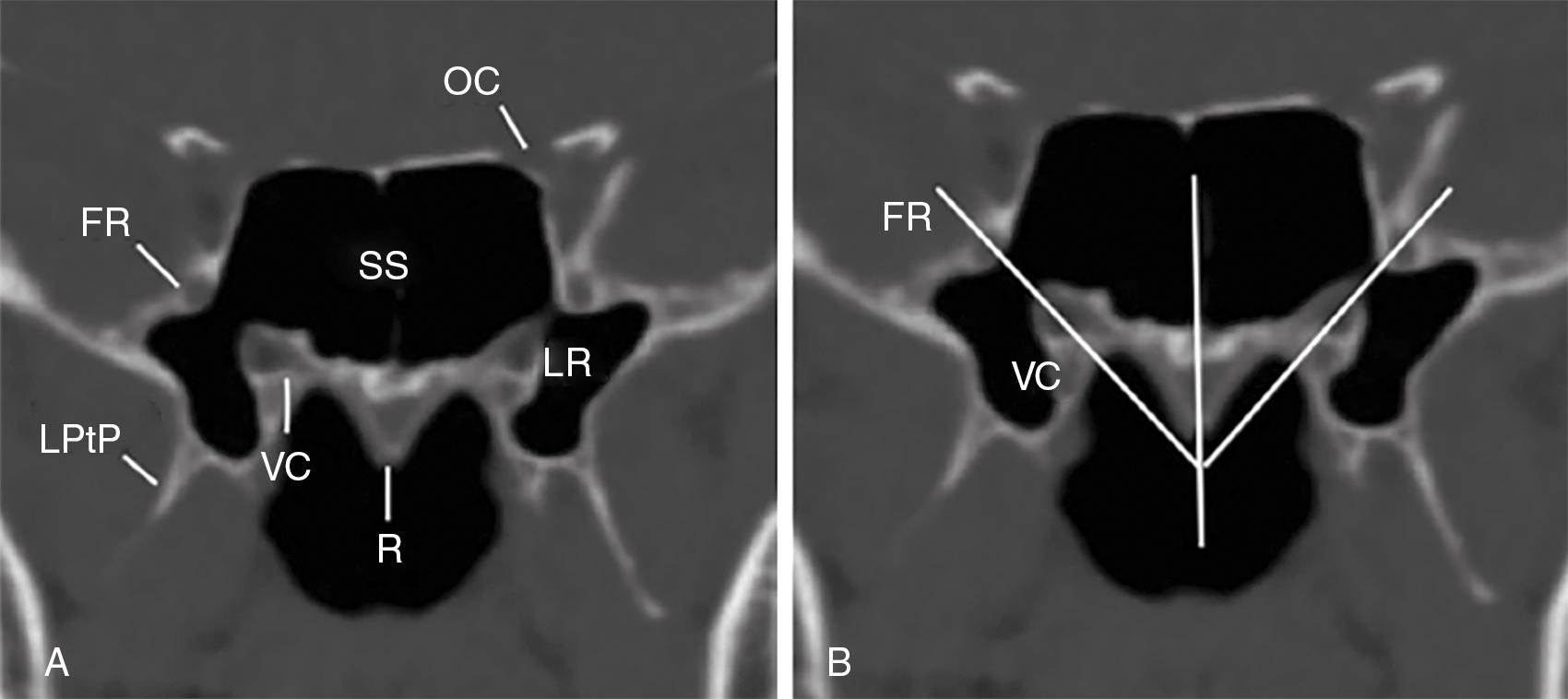Physical Address
304 North Cardinal St.
Dorchester Center, MA 02124
Over the past 3 decades, the management of cerebrospinal fluid (CSF) leaks from the anterior and middle cranial fossa has changed dramatically. One reason is the robust expansion of endonasal endoscopic surgery for approach and management of these issues, shifting the paradigm of management from open to minimally invasive endoscopic techniques. One traditionally difficult area to address is the lateral recess of the sphenoid sinus (LRS). The LRS develops from a widely pneumatized sphenoid sinus that extends lateral to vidian canal to the foramen rotundum (V-R) line and posterior to the pterygopalatine fossa (PPF) in a pneumatized portion of the pterygoid process ( Fig. 22.1 ). Although a rare site of CSF leaks, it has been reported that up to 35% of patients with elevated intracranial pressure (ICP) present with a CSF leak with or without meningoencephalocele in this region. This chapter briefly reviews the causes of CSF leaks to highlight the need for adequate pre- and postsurgical planning and management. It then explores the traditional open approaches for leaks in the LRS followed by endoscopic endonasal options for this challenging anatomic area.

Essential to a good surgical outcome, no matter the approach, is a complete understanding of the disease pathology. As has been previously presented in this textbook and in the literature, the causes of CSF leaks in the LRS include congenital, traumatic (including iatrogenic), neoplastic, and idiopathic. Apart from trials of conservative management for traumatic leaks from blunt trauma, the majority of LRS CSF leaks require surgical intervention. Carefully performing a history and physical examination, along with imaging such as dedicated sinus computed tomography (CT) and magnetic resonance imaging (MRI), is critical to determining the site of the skull base defect.
Often in the case of trauma or iatrogenic injury, a specific onset of drainage is noted coinciding with an accident or surgery. For patients with idiopathic CSF leaks, attention to body mass index, visual disturbances (including papilledema), headaches, pulsatile tinnitus, history of meningitis, Chiari malformation, or intracranial hemorrhage may all be important pearls of information to raise suspicion for elevated ICP. Often, placement of a lumbar drain with opening pressure measurement at the time of surgical repair is helpful for diagnosis and management of intracranial hypertension in the immediate postoperative period. Additionally, some recommend use of intrathecal fluorescein for patients with concerns of multifocal skull base dehiscence or identification of difficult to identify leak site on preoperative imaging.
Cerebrospinal fluid leaks from several common areas within the sphenoid sinus have been noted, including the planum sphenoidale, parasellar area, and lateral recess of the sphenoid. CT sinus with or without contrast is often very helpful to identify bony landmarks and any dehiscence near important structures such as the optic nerve, carotid canal, and cavernous sinus. MRI of the orbits with and without contrast is also helpful for determining contents of meningoceles versus meningoencephaloceles and can also discern between obstructed mucin and CSF fluid or even a potential aneurysm of a dehiscent cavernous carotid artery. Predictive measures such as the angle between the vidian canal and foramen rotundum may also be helpful, as well as the volume of the lateral recess, in predicting whether standard transnasal versus expanded transpterygoid techniques are used ( Fig. 22.2 ).

Become a Clinical Tree membership for Full access and enjoy Unlimited articles
If you are a member. Log in here